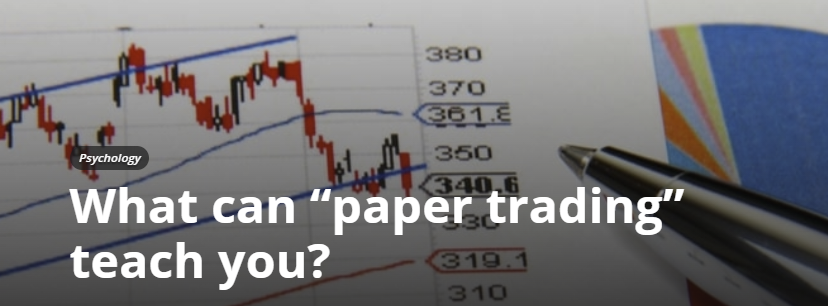
Most traders use “paper trading” at some stage as a learning tool. Even big trading companies often have their trainees start by working with a notepad to keep track of trading sessions.
A common question that is asked when people are told to use “paper trading” is if it wouldn’t be better and more realistic to rather practice with a demo account. That does after all seem more logical and easier.
In this article, we’ll have a look at this self-study method to determine if and why it is useful. We’ll also give you guidelines you can use to evaluate the effectiveness of your strategies from the beginning.
A basic paper trading guide
1. Determine basic parameters
The first step in this process is to determine the basic parameters you will be using in the process and write them down. These include:
- The starting amount you will be trading with.
- The assets you are going to trade with, e.g. specific currency pairs or commodities.
- The strategies that will be used.
This step will assist you concentrate on only a few trading instruments. Select no more than 3 trading strategies and 3 to 5 assets.
2. Set your limits
Determine how much money you are willing to lose. Note that your full deposit should not be used as a limit, as this will lead to bankruptcy. As a guideline, only use 5% to 10% of your starting capital per trade.
Decide what your profit goal will be. A general rule of money management is that your profit goal should be at least double the loss limit’s size.
3. Begin “paper trading”
Visit a trading platform and start studying the charts of your preferred assets for various time frames to find appropriate signals. If one of you strategies gives a signal, write that you’ve made a trade.
Example: A DeMarker indicator shows overbought on a 10 minute time frame of the GBP/EUR chart. We invest $15 and set the time to expiration to 30 minutes. The starting time is 11:23 and the starting quote is 1.296.
Continue monitoring the asset. The reason for this is that it is psychologically different to analyze an asset before and after starting a trade. There is however almost no psychological barrier when “paper trading” is used. It will therefore be easier to study in detail the various factors that will either overturn or prove your hypothesis for this investment.
4. Make summaries
Summarize the provisional results by jotting them down every 30 minutes or hour until your limits are met.
While waiting for the situation to develop, you can work out how much you’ve earned or lost, study your strategies’ efficiency and, if required, modify the ones that did not meet your criteria to make them better.
5. Close the session
After the session, analyze all the trades again. The detailed notes you made during step 3 will enable you to find all the most important and interesting moments.
It is important to draw clear conclusions. After each “paper trading” session, try developing new ideas that can be used in the future. If you have for example been making a loss for a number of consecutive Wednesdays while using a specific strategy, delete this strategy from the portfolio.
Wouldn’t it be better to use a demo account?
There is no doubt that a demo account is a very useful training tool and every trader should use it at some stage, irrespective of which strategy or financial instrument they prefer to work with.
“Paper trading” does not replace trading with a demo account, but is an extra training method. It can be very useful for traders that don’t feel they learn enough when using only a demo account, or who want to explore other trading approaches. Although some novice traders seem to do all the preparation required for a successful trade, they still don’t manage to become profitable.
In these scenarios, “paper trading” is an alternative method that is definitely worthwhile experimenting with.
What can you learn from “paper trading”?
The most useful aspect of “paper trading” is that it will help you learn how to think like traders do. Carefully go over step 3 again.
If you manage to develop this skill, it will help you move your trading up to a whole new level. The readiness to admit mistakes, as well as being able to explain the detailed reasoning for doing a trade are after all some of the crucial characteristics of professional traders.
If you’re not yet at that level, it’s time to try and understand the market by using a paper trading.